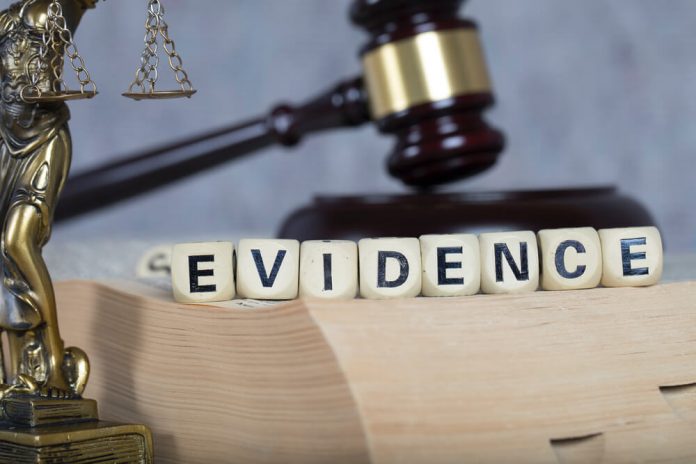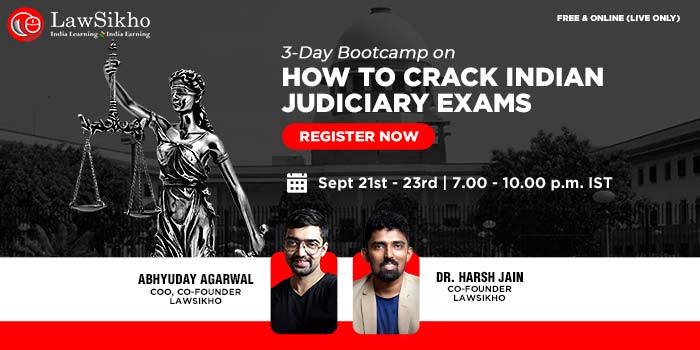

This article is written by Neha Dahiya, a law student at Dr. B.R. Ambedkar National Law University, Sonipat. This article explains the concept and types of evidence as mentioned under the Indian Evidence Act,1872 with special emphasis on secondary evidence and its elements. It also outlines the difference between primary and secondary evidence and the circumstances in which secondary evidence is used in the place of primary evidence.
Table of Contents
Evidence forms an integral part of the justice delivery system. It is with the help of the evidence that the alleged facts are proved in a court of law and the right decision is taken. Evidence has been dealt with in detail in the Indian Evidence Act,1872. One of the important forms of evidence mentioned in the Act is secondary evidence which plays a significant role in proving the alleged facts in cases wherein the original document, i.e. the primary evidence is not available due to exceptional circumstances. The Act contains elaborate elements of secondary evidence that outline what forms of documents can fall in this category.

The word ‘evidence’ has been derived from the Latin expression ‘evidens evidere’ which translates to “to show clearly; to make plain, certain or to prove.” Whenever a case is presented before the court, it has to go through a lot of facts and information given by the contesting parties. A court of law is expected to examine the truth of those facts and deliver justice. This is where the role of ‘evidence’ comes into the picture. Evidence is that support provided to the facts presented that prove the genuineness of those facts. It is all about giving proof of something before the court.
As per Section 3 of the Indian Evidence Act,1872, evidence means and includes:
Oral evidence basically implies words of mouth that are credible enough to be adequate to prove a particular fact without the support of any documentary evidence. According to Section 60 of the Indian Evidence Act, 1872, oral evidence must have the following requisites:
Though hearsay evidence is not acceptable in a court of law, Section 32 of the Indian Evidence Act, which talks about the cases in which a statement of relevant fact by a person who is dead or cannot be found, etc. is relevant, and Section 33 of the same Act which covers relevancy of certain evidence for proving, in the truth of facts that are presented, form the exceptions of this rule.
Whenever any evidence is presented to prove certain facts that contain the matter expressed or described upon any material by way of letters, marks, figures, or by more than one such method by which such expression can be made materially, it is called documentary evidence. Thus, it refers to evidence in physical or tangible form.
Now as per Section 61 of the Indian Evidence Act, documentary evidence could either be primary or secondary.
According to Section 3 of the Indian Evidence Act, a document refers to “any matter expressed or described upon any substance by means of letters, figures or marks, or by more than one of those means, intended to be used, or which may be used, for the purpose of recording that matter.” Now, this may include printed, lithographed, or photographed words, a map or plan, a caricature, or even an inscription on a metal plate or stone.
Section 61 states that the contents of a document can be proved in two ways. They are as follows:

According to Section 63, secondary evidence means and includes the following:
Section 76 of the Evidence Act describes the certified copies. It lays down that every public officer having the custody of any public document, in relation to which any person has a right to inspect, shall give a copy of that document on demand and on payment of the requisite fee. At the feet of such copy, a certificate must be affixed declaring that it is a true copy of the said copy. The date of the copy, the name and official title of the officer who has subscribed to such copy, and the seal of the officer must also be affixed on that copy.
In the case of Kalyan Singh v. Smt. Chhoti and Ors. (1989), it was observed that the genuineness of certified copies that are referred to in Section 63(1) is presumed under Section 79 of the Evidence Act. But this is only for the certified copies. For other copies, proper evidence must be provided to prove it. Thus, the certified copy of a registered sale deed shall be admissible as secondary evidence but not any ordinary copy.
For this particular provision, elaborate guidelines were issued in the case of Surinder Kaur v. Mehal Singh (2013). It was observed:
This provision is further elaborated by the illustration attached with Section 63. It states that a copy transcribed from a copy is admissible as secondary evidence only when compared with the original. If the copy is not compared with the original, it is not considered to be secondary evidence, even though the copy from which it was transcribed was compared with the original.

This provision states that the counterparts of documents are admissible as secondary evidence against the person who had not executed it.
Oral accounts of a person about the content of a document must be closely examined. Not examining the informant or not presenting the report of that person is fatal and such a person’s report cannot be relied upon in such a case.

| Primary evidence | Secondary evidence |
| It is defined under Section 62 of the Indian Evidence Act. | It is defined under Section 63 of the Indian Evidence Act. |
| It consists of the original document that is presented in the court for inspection. | It consists of documents other than the original like the copy or others, as enlisted in Section 63. |
| It is considered the best form of evidence. | It is not the best form of evidence and is usually presented in exceptional circumstances such as, the absence of primary evidence. |
| Presenting primary evidence is the general rule to prove a particular fact. | Presenting secondary evidence is the exception to the general rule. |
| No notice is required to be served before the presentation of primary evidence. | A notice must be served before presenting secondary evidence. |
| It is the main source of evidence. | It is the alternate source of evidence. |
Section 65 of the Indian Evidence Act enlists the circumstances under which secondary evidence is admissible in place of primary evidence. They are as follows:
B. In the case where the contents, existence, or contents of the original document have already been proved to be admitted in writing by the person against whom it is proved or his representative interest.
For example, in the case of Sharda Talkies (Firm) and Anr. v. Smt. Madhulata Vyas and Ors. (1995), it was held that in a case where the defendant himself had admitted to having made the payment under the cheque, the absence of the cheque as primary evidence can be dispensed with and this would not vitiate the suit.
C. In a situation, wherein the original has been lost or destroyed, or the party who is presenting the evidence cannot present it in reasonable time due to any reason other than his default or neglect;
D. In case where the original document is not of such nature that it is not movable so as to be presented before the court for inspection;
E. In an instance where the original document is a public document within the meaning of Section 74;
F. In a situation where the original is a certified copy that is permitted by this Act or any other law in force in India to be given in evidence;
G. In the case where the original consists of numerous accounts or documents which cannot be conveniently all examined by the court, or the fact which is to be proved is the general result of the whole collection.
In cases ‘A’, ‘C’, and ‘D’, secondary evidence of the contents of the document is admissible. In the case of ‘B’, only the written evidence is admissible. In the case of ‘E’ or ‘F’, only the certified copy of the document shall be admissible as secondary evidence. Lastly, in the case of ‘G’, evidence to be presented as the general result of the documents collectively must be given by a person who has examined them and is skilled in the examination of such documents.
As per Section 66, in the following circumstances, there is no need to render a notice for the presentation of secondary evidence:
The following are some common examples of secondary evidence presented in the courts:
Secondary evidence is not considered to be the best form of evidence. It is usually presented in exceptional circumstances where primary evidence is not available. However, this cannot belittle its significance in proving certain facts. There are a number of instances wherein the presence of primary evidence is not possible. In such circumstances, secondary evidence plays a crucial role in proving the facts before a court of law and helps in the delivery of justice. The Indian Evidence Act covers the concept of secondary evidence elaborately, including its meaning, what can be included under it, and when it can be presented in place of primary evidence.
Students of Lawsikho courses regularly produce writing assignments and work on practical exercises as a part of their coursework and develop themselves in real-life practical skills.
LawSikho has created a telegram group for exchanging legal knowledge, referrals, and various opportunities. You can click on this link and join:
Follow us on Instagram and subscribe to our YouTube channel for more amazing legal content.
